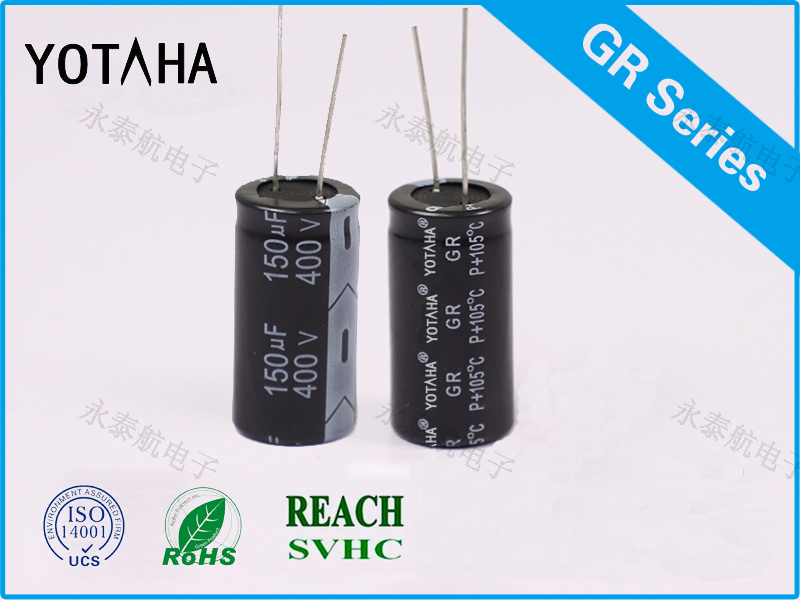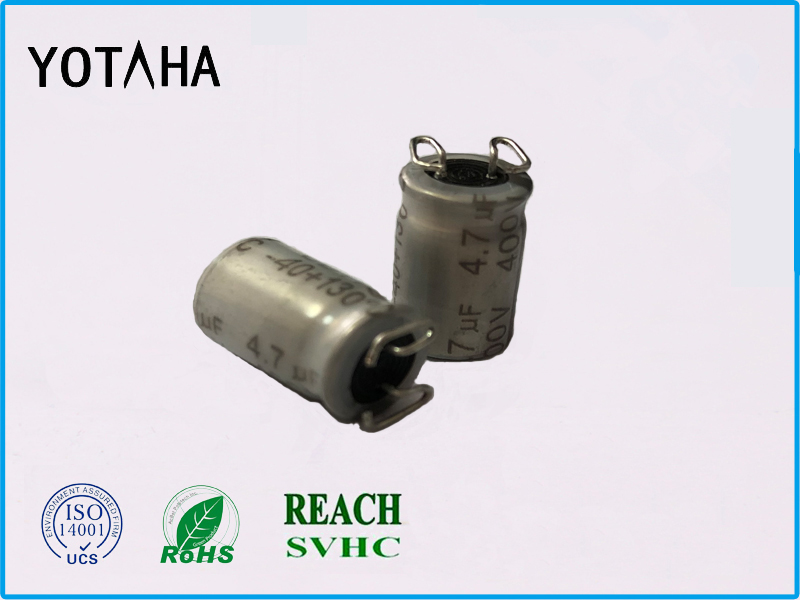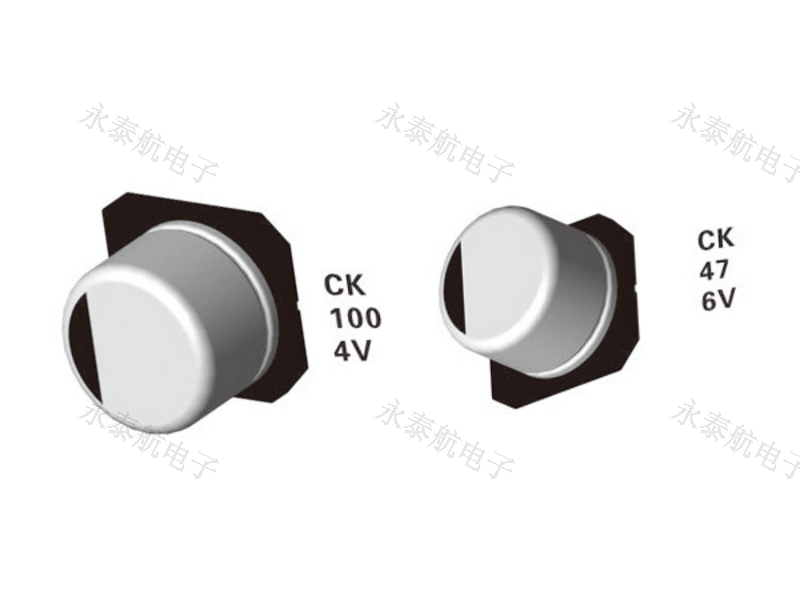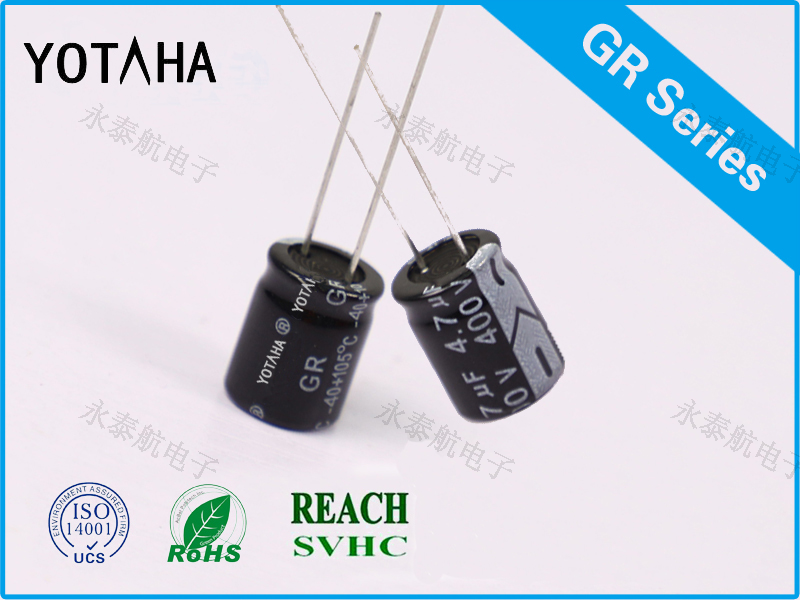1. Design considerations
In non-solid electrolyte capacitors, the dielectric is the anode aluminum foil oxide layer. The electrolyte serves as the electrical contact between the cathode aluminum foil and the oxide layer of the anode aluminum foil. The paper interlayer absorbing the electrolyte becomes the isolation layer between the cathode aluminum foil and the anode aluminum foil, and the aluminum foil is connected to the terminal of the capacitor through the electrode lead sheet.
By reducing the ESR value, the internal temperature rise caused by the ripple current in the capacitor can be reduced. This can be achieved by using multiple electrode lead tabs, laser welding electrodes and other measures.
The ESR value and ripple current determine the temperature rise of the capacitor. One of the main measures to promote a satisfactory ESR value of the capacitor is: usually one or more metal electrode tabs are used to connect the external electrode and the core package to reduce the impedance between the core package and the pin. The more electrode tabs on the core package, the lower the ESR value of the capacitor. With the help of laser welding technology, more electrode tabs can be added to the core package, so that the capacitor can achieve a lower ESR value. This also means that the capacitor can withstand higher ripple current and has a lower internal temperature rise, which means a longer working life. This is also helpful to improve the ability of the capacitor to resist vibration, otherwise it may cause internal short circuits, high leakage current, capacitance loss, increase in ESR value and circuit open circuit.
Through the good mechanical contact between the capacitor core package and the bottom of the aluminum shell and the heat sink in the middle of the core package, the internal heat of the capacitor can be effectively released from the bottom of the aluminum shell to the bottom plate connected to it.
The internal heat conduction design is extremely important for the stability and working life of the capacitor. In EvoxRifa's design, the negative aluminum foil is extended to directly contact the thick bottom of the capacitor aluminum case. This bottom becomes the heat sink of the core package so that the heat from the hot spot can be released. If you choose the bolted installation method, safely install the capacitor on the bottom plate (usually an aluminum plate), you can get a more comprehensive heat conduction solution with lower thermal resistance (Rth.).
By adopting the phenolic plastic cover with the electrodes around the whole and the double special gaskets and the aluminum shell, the loss of electrolyte can be greatly reduced.
The evaporation of the electrolyte through the gasket determines the operating time of the long-life electrolytic capacitor. When the electrolyte of the capacitor evaporates to a certain extent, the capacitor will eventually fail (this result will be accelerated by the internal temperature rise). The double-layer sealing system designed by EvoxRifa can slow down the evaporation of electrolyte and make the capacitor reach its longest working life.
The above characteristics ensure that the capacitor has a long working life in the required field.
3.2 Application factors affecting life
According to the life formula, it can be concluded that the application factors that affect the life are: ripple current (IRMS), ambient temperature (Ta), and the total thermal resistance (Rth) transferred from the hot spot to the surrounding environment.
1. Ripple current
The magnitude of the ripple current directly affects the hot spot temperature inside the electrolytic capacitor. Check the user manual of the electrolytic capacitor to get the allowable range of ripple current. If it exceeds the range, it can be solved in parallel.
2. Ambient temperature (Ta) and thermal resistance (Rth)
According to the hot spot temperature formula, the application environment temperature of aluminum electrolytic capacitors is also an important factor. In application, consider the environmental heat dissipation method, heat dissipation strength, the distance between the electrolytic capacitor and the heat source, and the installation method of the electrolytic capacitor.
The heat inside the capacitor is always conducted from the "hot spot" with the highest temperature to the part with relatively low ambient temperature. There are several ways of heat transfer: one is conduction through aluminum foil and electrolyte. If the capacitor is installed on a heat sink, part of the heat will also be transferred to the environment through the heat sink. Different installation methods and spacing and heat dissipation methods will affect the thermal resistance of the capacitor to the environment. The total thermal resistance transferred from the "hot spot" to the surrounding environment is represented by Rth. Use clip mounting, install the capacitor on a heat sink with a thermal resistance of 2°C/W, and get the thermal resistance value of the capacitor Rth=3.6°C/W; use bolt installation to install the capacitor at a thermal resistance of 2°C/W On the heat sink, when the forced air cooling rate is 2m/s, the obtained thermal resistance of the capacitor is Rth=2.1℃/W. (Take PEH200OO427AM capacitor as an example, the ambient temperature is 85℃).






